TREES & SHRUBS FOR ALL
Taking Root
Fall is my favorite time to plant trees and shrubs — it’s the best time, in fact, for most of them. Here in cold hardiness Zone 5 of New York’s Hudson Valley, the specific date is October 17th. No, no, just kidding. Anytime around the middle of fall is good.
And that’s one reason I like fall planting. With plant growth ground to a halt and the soil generally in good condition for planting, fall planting is a relaxed affair. In spring, plants are raring to grow so want their roots nestled in their permanent home as soon as possible.
But enough about timing. Let’s see what form trees and shrubs, whether in fall or spring and whether purchased through the mail or locally, are available. You can buy trees and shrubs in one of three different ways.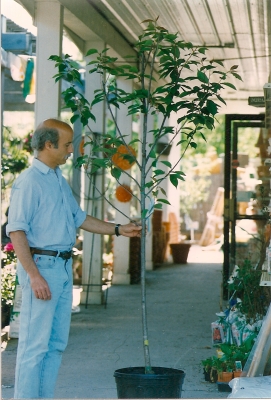
Beginning gardeners might be shocked to hear that I sometimes plant trees and shrubs that have been dug up, then, after having their roots shaken free of soil, are shipped all over the country to my farmden. The so-called “bare-root” trees are grown in a field, then dug while they are leafless, which might be done in either fall or spring. Trees dug in fall are sold immediately or else are stored through winter with their roots packed in moist material. Root loss during digging is an obvious drawback to bare-root trees. 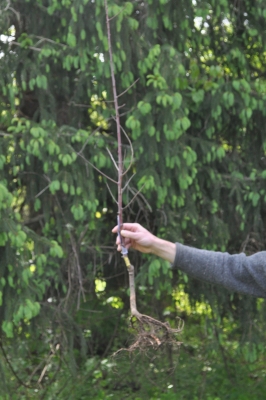
Although bare-root might seem like a brutal way to treat a tree or shrub, the plants handle the move well as long as their roots are kept moist prior to planting. But bare root trees or shrubs — typically three or four feet in height — should not be dug until they have lost all, or nearly all, of their leaves in the fall. And their roots must be cozied into the ground before shoots start growing, highlighting another advantage of fall planting: There’s no danger of shoots growing prematurely because shoot buds stay dormant until spring, after they have experienced a winter’s worth of cold.
The big advantage of bare-root plants is that they can be easily and relatively cheaply shipped all over the country, giving you the widest possible selection in types of trees. What’s more, because you can see the roots, you can easily assess their condition.

Mail order, bare root trees
Most of the trees and shrubs I buy are bare root.
More Ways with Roots
“Balled-and-burlapped” trees are also grown in a field, but they are dug along with their soil, and then roots and clinging soil are snuggled into a wrapping of burlap. Because clay soils hold together better than lighter soils, balled-and-burlapped trees are usually grown in clay soils. But clay soils also are heaviest, so these plants, carrying their load of soil around their roots, are especially heavy. 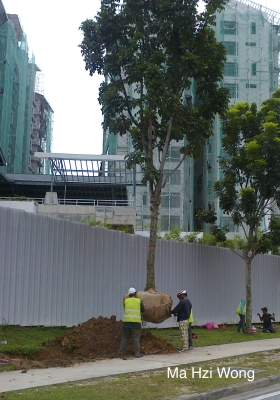
Weight and the need for extra care to avoid breaking up the root ball make mail order shipping of balled-and-burlapped trees unfeasible. Root loss can be extensive when balled and burlapped trees are dug, and plant selection is limited.
Increasingly, both local and mail order nurseries are selling trees and shrubs as “container grown.” These nursery plants spent their lives in pots. The potting mix is lighter than field soil, so such plants can be economically shipped through the mail.
Ideally, a container grown plant spends long enough in the container so that its roots just fill it. Watch out, though: Some garden centers and nurseries buy bare-root trees, then pot them up for quick sale as container plants. And equally bad, plants that are truly container grown are often left too long in their containers. Once the roots start growing around and around in the pot, they can actually choke the plant, a condition that continues to develop even after the plant is set in the ground.
If possible, check the quality of a container grown plant by sliding it out of its container to make sure it’s not rootbound, with roots that are thick and tangled. 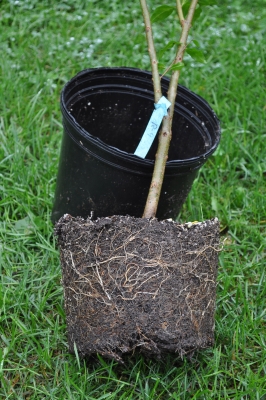 The top growth of a well-proportioned, potted tree or shrub should be no higher than two to three times the depth of the container in order to ensure a good ratio of roots to stems.
The top growth of a well-proportioned, potted tree or shrub should be no higher than two to three times the depth of the container in order to ensure a good ratio of roots to stems.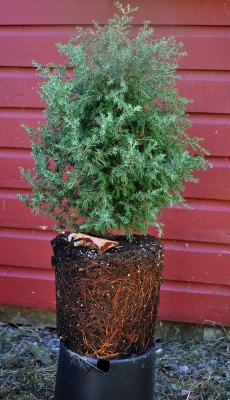
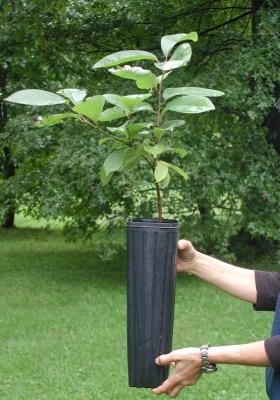
Deep container for long tapped rooted persimmon tree
Bigger is not Better
Whether you’re buying bare-root, balled-and-burlapped or containerized trees and shrubs, restrain yourself from buying the largest possible plant. In the case of the first two kinds of nursery plants, small plants suffer less root loss in transplanting.
No matter what form of nursery plant, smaller plants need less water following planting and enough new roots more quickly explore surrounding soil to make the plant self-sufficient sooner. Not too many seasons after transplanting, growth of an initially smaller plant frequently overtakes that of an initially larger one.


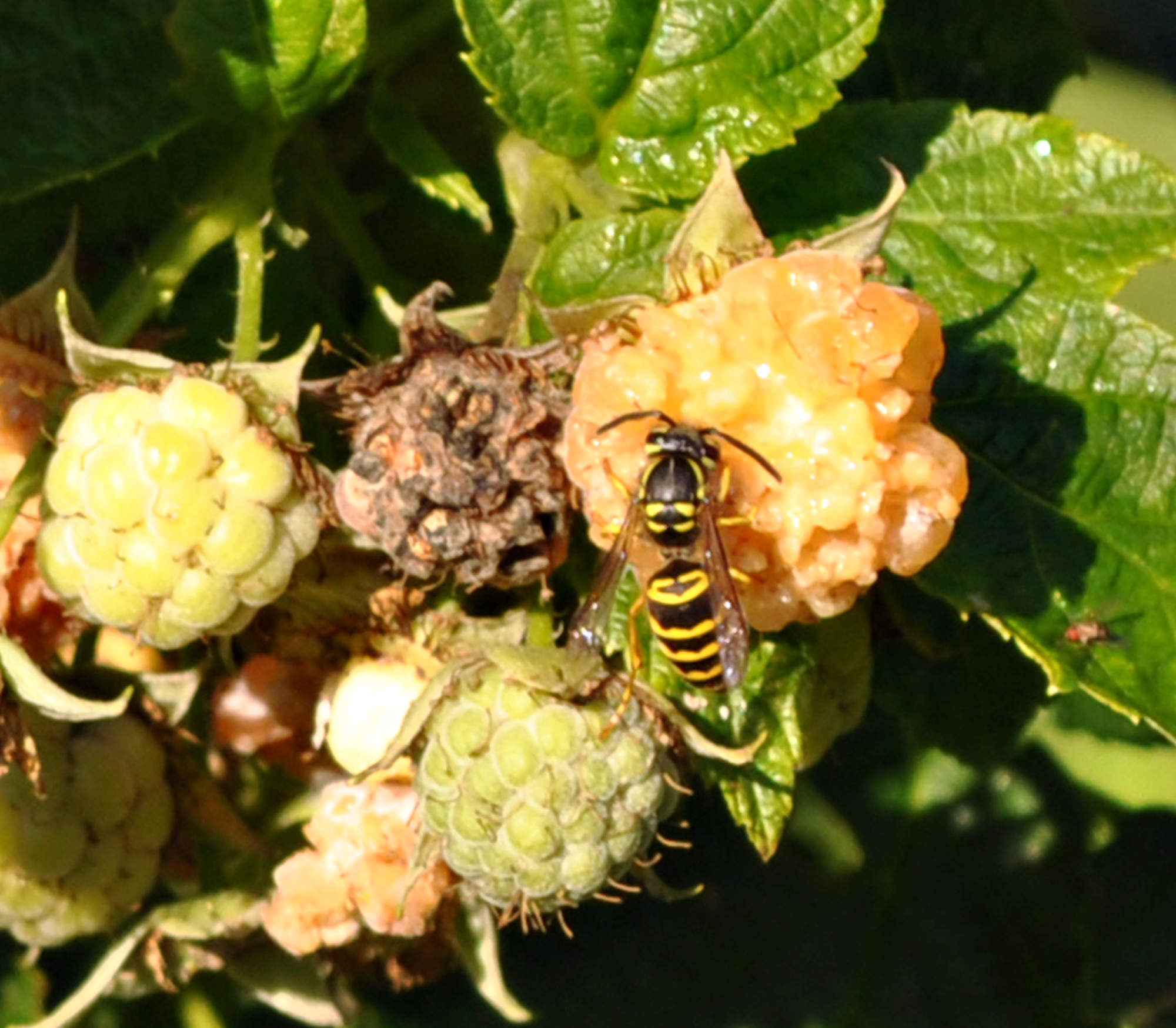

Thanks, Lee. You continue to inspire us, even way over here in Washington state! Sending warm regards!